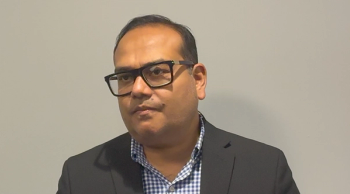
What Role Does Systemic Inflammation Play in Triple-Negative Breast Cancer?
Researchers looked at the role of biomarkers associated with systemic inflammation among patients with triple-negative breast cancer.
Biomarkers associated with systemic inflammation are linked to a poorer prognosis among patients with triple-negative breast cancer (TNBC), according to a new study. The data suggest that targeting interleukin-6 (IL-6) along with programmed death ligand 1 (PD-L1) may be an effective strategy in this difficult-to-treat population.
The results of this study (
“It has been shown that pre-existing tumor immune biology, including PD-L1 expression in the tumor microenvironment, CD8+ T cells, and stromal TILs, has been associated with clinical activity in metastatic TNBC patients treated with PD-L1/PD-1–targeting agents,” said Molinero. Single-agent outcomes with immune checkpoint inhibitors have been poorer than with chemotherapy in previous studies, so researchers examined the immune-related biology of patients treated with atezolizumab in order to plot a more promising path forward. They collected plasma samples at baseline from 116 patients with TNBC enrolled in a phase I trial of atezolizumab.
They found that biomarkers of systemic myeloid inflammation were associated with poor prognostic baseline characteristics. Specifically, higher levels of IL-6, IL-8, and C-reactive protein (CRP) were associated with poor performance status, the presence of liver metastases, larger size of tumor lesions, and increased circulating lactate dehydrogenase levels.
Some markers of inflammation were also associated with outcome. Patients with a lower neutrophil-to-lymphocyte ratio had longer overall survival (OS) and progression-free survival (PFS). Those with a ratio of 5 or below had a hazard ratio (HR) for OS of 2.87 (95% CI, 1.73–4.76).
Additionally, patients who responded to single-agent atezolizumab had lower baseline levels of IL-6, CRP, and IL-8. On a univariate analysis, patients with a baseline IL-6 level of at least 15 pg/mL had a HR for PFS of 1.87 (95% CI, 1.23–2.83); for OS, the HR was 2.55 (95% CI, 1.63–4.01). Associations with PFS and OS were also significant for both IL-8 and CRP. The association remained significant for IL-6 and CRP on a multivariate analysis, though not for IL-8.
The researchers then tested the combination of atezolizumab and IL-6 blockade in a mouse model, and found a significant synergistic effect with the two agents. “In patients with TNBC and systemic inflammation, combined blockade of IL-6 and PD-L1 may improve clinical outcome,” Molinero said.
“Targeting IL-6 is not new to oncology,” Munster said. “However, there has been limited single-agent activity.” The improvement seen when in combination with an anti–PD-L1 agent is promising, especially given anti–IL-6 agents’ general availability. “This is an easy translation into the clinic,” she said.
Newsletter
Stay up to date on recent advances in the multidisciplinary approach to cancer.



















































































